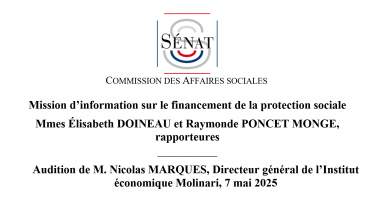The anti-tobacco campaign and its contradictions
Article published exclusively on the Institut économique Molinari’s website.
Many governments in North America and Europe have moved toward a ban on cigarette smoking in public places, or are planning to do so. After Ireland in March 2004, Italy in January 2005 and Sweden in June 2005, France may fall under the same prohibition laws. For the first time in this country, such a proposal has begun to be discussed in parliament.
Many governments in North America and Europe have moved toward a ban on cigarette smoking in public places, or are planning to do so. After Ireland in March 2004, Italy in January 2005 and Sweden in June 2005, France may fall under the same prohibition laws. For the first time in this country, such a proposal has begun to be discussed in parliament. The French State does not fool around anymore where tobacco is concerned, as another recent proposal has shown , nothing less than banning chocolate cigarettes, as they are said to have the fatal flaw of encouraging children to become smokers. These developments should not surprise anyone. For more than a hundred States have signed the World Health Organisation’s framework convention on tobacco control. This is a global crusade against the use of the disgraced substance, officially celebrated again on 31 May, the World No Tobacco Day.
The WHO justifies its restrictive policies by claiming tobacco kills 5 million adults each year, and endangers the survival of public healthcare systems. At first sight, the cause seems clear and the consensus quite innocent. In reality, actions and speeches lack coherence and are confusing when it comes to the motivation and effectiveness of such policies. If governments want to place healthcare before all else, why do they not repeal policies that encourage their subjects to expose themselves to the dangers of tobacco?
For example, the banning of products known as “smokeless tobacco” in the European Union has probably led to a relative rise in demand for smoking tobacco. However, more and more doctors consider that serious diseases linked to tobacco are caused not so much by nicotine as by toxic products inhaled while smoking. Legal access to smokeless tobacco products would allow smokers not able to give up nicotine to be protected from the dangers of smoke. Public healthcare systems would of course suffer less as a result. What is disturbing in this case is that the WHO, while recognizing the advantages of smoke-free products[Cf. The WHO European [Strategy for Smoking Cessation Policy , page 25.]], considers that the anti-tobacco campaign should concern all tobacco products, whether they are smoked, sucked or chewed.[[Cf. WHO Framework Convention on Tobacco Control , page 10.]] If governments are in a hurry to raise taxes on cigarettes or to ban smoking in public places, liberalisation of smokeless tobacco does not seem to be on the agenda.
Moreover, taxpayers or other contributors who fund the public health system are forced to pay the financial consequences of risks taken by smokers. Spending public funds to finance care for sick smokers amounts indirectly to subsidising their lifestyles. Under these circumstances there are fewer reasons to give up smoking, or not start in the first place. As a consequence, this practice is more widespread than it would be otherwise. Cutting down these subsidies would imply moving towards greater responsibility, less smoke and more freedom, the complete opposite of tobacco control policies. And public healthcare budgets could no longer be burdened by smokers who had become private patients once again (that is, those who continued smoking in spite of the abolishment of subsidies).
This proposal might be met with a certain amount of scepticism. However, its logic is no different from that which underlies the uncontroversial idea that it is possible to reduce cigarette sales by increasing prices. Subsidies amount to lower prices for smokers, a factor leading towards a rise in consumption. If everyone agrees with the WHO that the rise in the price of tobacco allows consumption to be reduced, everyone should also agree that lowering subsidies leads towards a decrease in consumption.
These non-authoritarian ways of seeing a relative decrease in tobacco consumption do not seem to have been envisaged by the governments who have signed the anti-tobacco treaty. We might therefore ask ourselves if other objectives are not interfering with the stated goal. Could anti-tobacco policies be nothing but a smokescreen?
Xavier Méra, Institut économique Molinari





